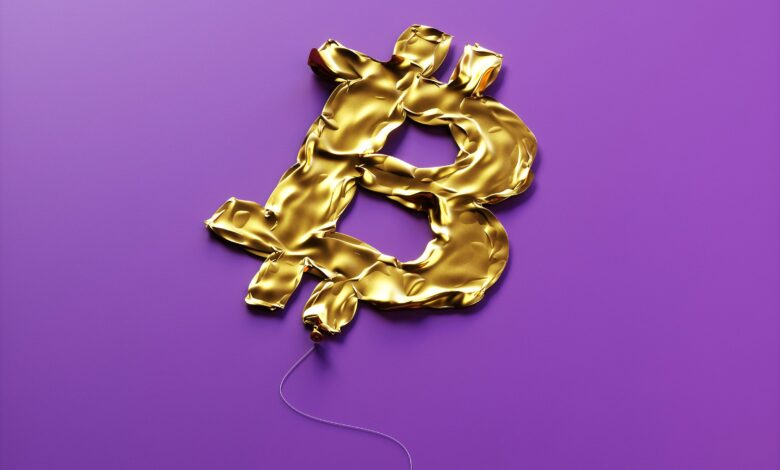Why Crypto Idealogues Won’t Touch Bitcoin ETFs

Bitcoin devotees are declaring a historic victory after US regulators approved a new, more accessible way for people to invest in the crypto asset after a decade of resistance. Yet they won’t go anywhere near it themselves.
On January 10, after a farcical false start, the US Securities and Exchange Commission approved the launch of spot bitcoin exchange-traded funds (ETFs) in the country. The ETFs will be issued by a selection of big-name financial institutions—including BlackRock, Fidelity, and Franklin Templeton—and will give people a way to invest in bitcoin through a brokerage, as if it were a stock. The price of the ETF shares will follow the price of bitcoin.
The arrival of the new ETFs has been broadly celebrated by bitcoin investors, who believe they will legitimize the asset in the eyes of wealthy institutional investors and make it easier for laypeople to invest, thereby broadening demand and driving up the price. The inconvenient catch is that spot bitcoin ETFs are at odds with practically everything bitcoin is supposed to stand for.
In their 2008 white paper, bitcoin’s pseudonymous inventor, Satoshi Nakamoto, outlined a vision for electronic cash that changes hands directly from person to person, under the control of no financial institution. It was two fingers to profit-hungry Wall Street. Yet the ETFs will be issued by some of the largest financial institutions in the US. Nor do investors own or keep any actual bitcoin; they are buying a representation. ETF investors may stand to “benefit from the financial upside, but will not attain all the benefits that Satoshi envisioned,” says Peter McCormack, host of podcast What Bitcoin Did. “The true ownership of bitcoin entails direct possession.”
In the weeks after launch, hundreds of millions of dollars are expected to flood into spot bitcoin ETFs. The result will effectively be a bifurcation of the asset into a form of bitcoin for investment and a bitcoin for bitcoin’s sake—held only by ideologues.
To explain the dissonance between the celebratory reception to the new ETFs and their blatant incompatibility with the Nakamoto ethos, bitcoiners point to the difficulty in achieving widespread adoption to date. The ETFs are a calculated compromise, they say, that addresses the unwillingness of regular people to deal with the perils of storing crypto themselves.
The ETFs will have a “mosquito effect,” says Max Keiser, who advises the government of El Salvador on bitcoin policy, “carrying the mind-virus of bitcoin far and wide.”
The attitude of crypto businesses, particularly those that support the ETFs with services, is that an increase in the profile and mainstream acceptance of crypto, in whatever form, will be beneficial to the long-term health of the industry after a long series of reputational setbacks.
“ETFs are just a form of distribution,” says Marshall Beard, chief strategy officer at Gemini, a crypto exchange that stores bitcoin on behalf of ETF issuers. Although investing in bitcoin through an ETF is not functionally identical to storing one’s own bitcoin, he says, the new funds will cater to an underserved demographic, for whom ease of access is the priority. “It’s not necessarily that one model is better than the other. It’s just different,” he says.
A diversification of parties with a stake in the crypto industry need not compromise the objectives of the earlier adopters, says Brett Tejpaul, head of institutional service at Coinbase, another crypto exchange partnering with ETF issuers. “I believe they will coexist in harmony with one another,” he says.
There are potential practical implications of a split in the way people choose to interact with bitcoin, though. One possible quirk, says Samson Mow, CEO of bitcoin-centric technology firm JAN3, could be a divergence in the price of bitcoin held by financial institutions and the bitcoin that changes hands peer-to-peer.
“Americans are probably just going to buy ETF shares and put them in their 401K,” says Mow, because “the average person doesn’t care about financial freedom,” leading to large pools of bitcoin ending up in the custody of institutions. This “institutional bitcoin,” as Mow calls it, could be prevented from exiting a closed-loop system by rules proposed by the Financial Action Task Force, an intergovernmental body of which the US is a member, requiring large institutions in some circumstances to only transact with one another. The “free bitcoin” in circulation may trade at a premium, Mow predicts.
There is some wistfulness among bitcoiners for the loss of the bygone era where almost everyone involved in bitcoin was like-minded—bound by a shared ideological commitment. But it is offset by a conviction that a method for bringing the asset to the masses, even in a bastardized form, was a necessity.
“I’m a little afraid,” says Arthur van Pelt, a bitcoin consultant and cohost of the Dr. Bitcoin podcast, of the prospect that storing one’s own bitcoin becomes a niche practice. Buying into an ETF is just “not the bitcoin ethos,” he says. “But I’m trying to be realistic.”
The ETFs, as a precursor to wider adoption and acceptance, are an inevitable step in the evolution of bitcoin as money, he claims: “It’s the natural order of things.”

